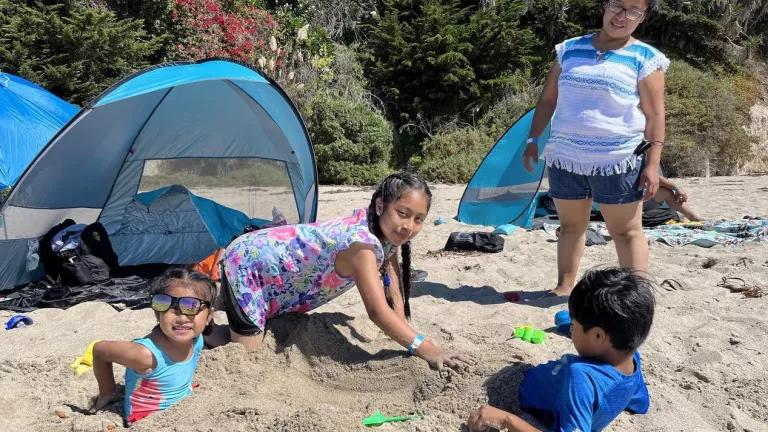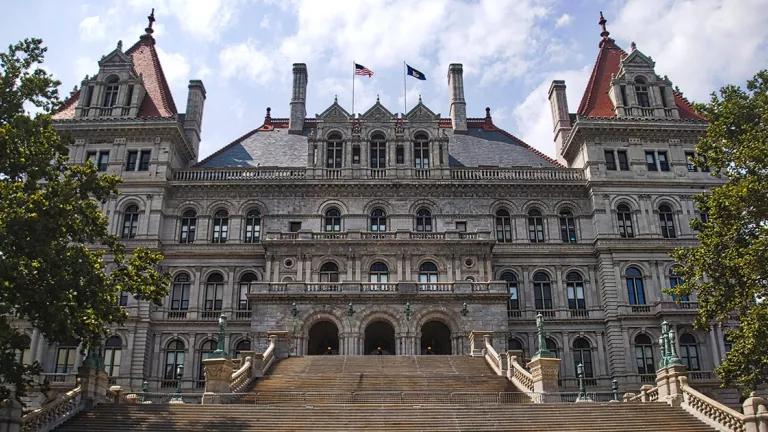Advancing Park Equity in Los Angeles and Beyond
Experts discuss how they fight against systems of power that have decided who does—and does not—get to have access to parks, open spaces, and nature.

Children playing in Jacaranda Park in South Central Los Angeles
On Thursday, July 30, panelists will discuss how they fight against systems of power that have decided who does—and does not—get to have access to parks, open spaces, and nature.
The COVID-19 pandemic has exposed a painful truth: Communities of color in Los Angeles are disproportionately confined to park-poor neighborhoods with more air pollution that increases vulnerability to the novel coronavirus. Before public parks reopened, government officials urged residents to either “stay at home” or remain within “walking distance” of their home for outdoor recreation. Although this policy was necessary and timely, it left people living (and now quarantined) in park-poor neighborhoods with little to no access to nature or open spaces, a result of decades of racist land use decisions and policies that include the use of racially restrictive covenants, redlining, exclusionary zoning, and the building of highways through communities of color. Our most vulnerable neighbors are thus deprived of the proven physical, emotional, and psychological benefits of access to nature—and at a time when those benefits are needed the most.
In working to increase access to nature, we need to be sure not to undermine other factors necessary to thriving communities, such as housing affordability. Yet green infrastructure investments, such as park renewal and urban forest revitalization, have been found to cause surrounding property values to surge, increasing gentrification pressures and displacement throughout major cities. Black and brown communities are too often pushed into cheaper, less healthy conditions and exhibit a higher rate of respiratory problems such as asthma caused by air pollution which make them more susceptible to COVID-19 than their white counterparts. Structural inequalities and institutional racism have deprived communities of color and lower-income communities of the myriad physical, mental, and social benefits that equitable access to nature would provide.
Friends of the Los Angeles River (FOLAR), Southeast Asian Community Alliance (SEACA), and NRDC each have long histories of advocating for equitable development and access to nature. For the last year and a half our organizations have come together to collectively launch two site-specific campaigns to advance increased access to nature and community-responsive development in the low-income communities of color of Glassell Park and Chinatown/Solano Canyon. In response to out-of-scale and misplaced private, market-rate developments proposals that threaten to escalate gentrification along the Los Angeles River (Casitas Lofts) and next to Los Angeles State Historic Park (Buena Vista Lofts, formerly Elysian Park Lofts), these campaigns are rooted in confronting long-standing inequitable land use planning decisions that have left communities of color not only without access to nature but overly burdened with toxic conditions.
To dive into these issues a little deeper, we are excited to host a panel of esteemed local advocates on Thursday, July 30 for a webinar entitled “Advancing Park Equity in Los Angeles and Beyond.” The panelists will discuss how they fight against systems of power that have decided who does—and does not—get to have access to parks, open spaces, and nature, and the value of these spaces to different communities of color across major cities like Los Angeles. Please join us for this important and informative discussion.
Special thanks to Alison Hahm (Access to Nature legal fellow), and Ramya Sivasubramanian (deputy director, Environmental Justice) for their research and contributions to this blog.




